


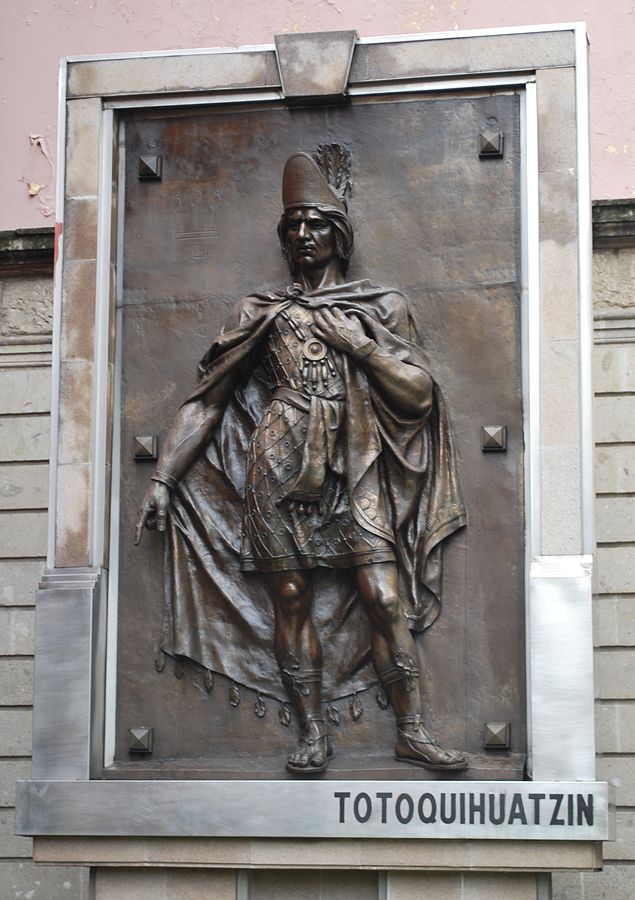
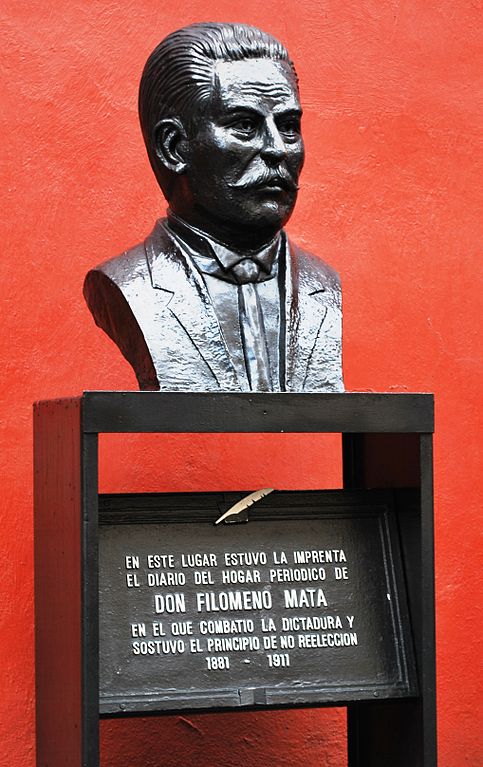
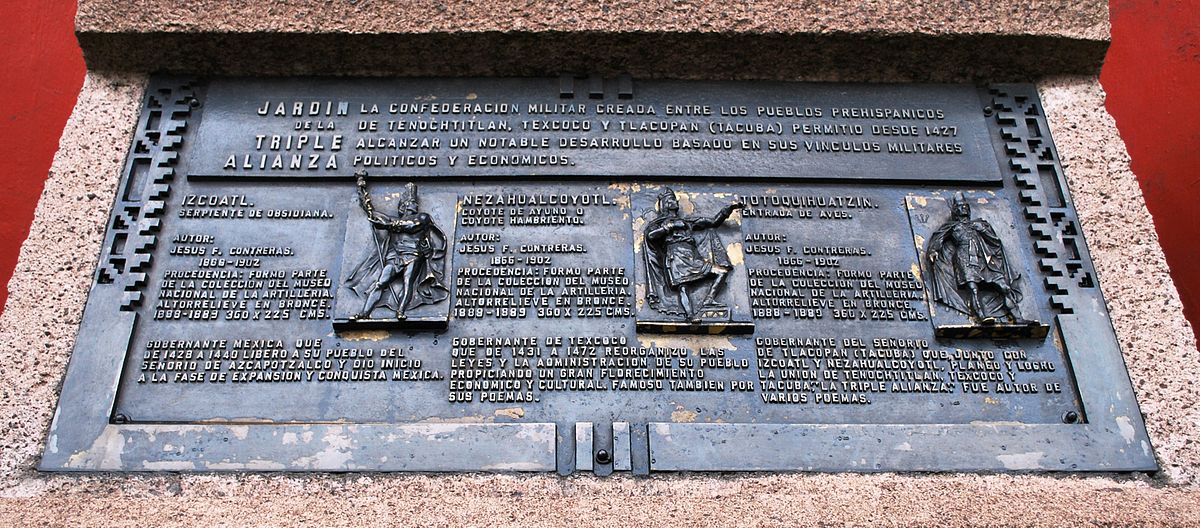
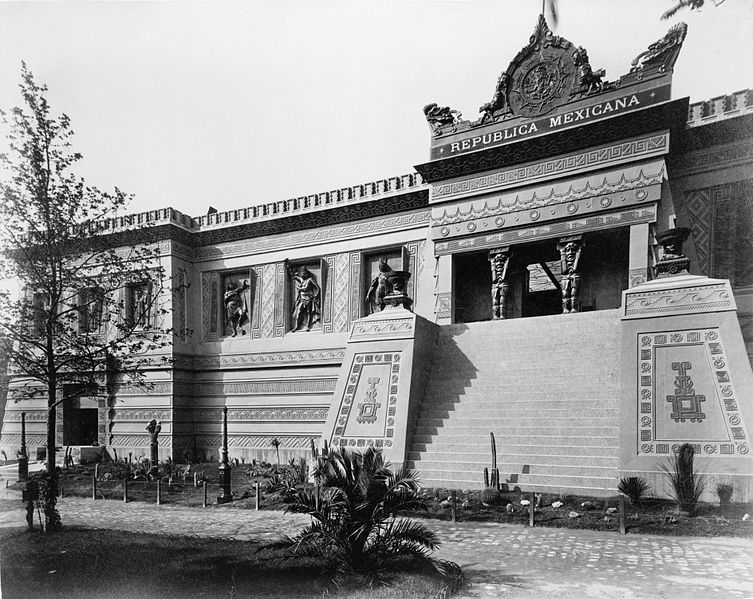
The Garden of the Triple Alliance is one of the big surprises on any walk down the Calle Tacuba. A garden and monument, it’s a commemoration of the Triple Alliance agreed to in the year 1427 by the rulers of Tenochtitlan, Texcoco and Tlacopan. But it’s an interesting story too.
A corner, two of it walls are provided by the former Bethlemite church, which is today the Museum of the Army and Air Force. That building, for many years, was the church of the Bethlemite Hospital and Monastery which is today the Interactive Museum of the Economy. (For more on the order, see the two museum entries.)
Filomeno Mata street is named for the activist and publisher who took over the building after the Religious Reform Period in the 1850s. Mata founded multiple newspapers. Here though he ran the Diario del Hogar newspaper for some 30 years. It became one of the most important publications in the period leading up to the Mexican Revolution. Mata was imprisoned by the Porfirio Diaz government on multiple occasions, and died only at the beginning of the Revolution in 1911.
The bas-reliefs are the work of the acclaimed sculptor Jesús F. Contreras. He completed the works in 1888 to be parts the Mexico Pavilion the Paris Universal Exposition of 1889. The reliefs now face the Palacio de Mineria which houses the library named for one of the architects of the pavilion, the Biblioteca Ing. Antonio M. Anza, today the UNAM Architecture and Engineering library.
Contreras is most famous for his sculpture, Malgré Tout, in marble within the MUNAL collection. A copy in bronze is on the edge of the Alameda Central. His equestrian monument to Ignacio Zaragoza is in the city of Puebla. And some 20 of his bronze statues line the Paseo de la Reforma.
Controversial within the Universal Exposition, the pavilion was taken apart and the reliefs were later shipped back to Mexico. One more of them is inside the Army and Air Force musuem. That one depicts Cuauhtémoc. And replicas of all four were made for the Monument to La Raza, on Insurgents Avenue.
The leaning bronze plaque, pictured above reads:
The military confederation created among the pre-Hispanic people of Tenochtitlan, Texcoco, and Tlacopan (Tacuba) allowed all of them since 1427 to achieve a notable development based on their interconnections, militarily, politically and economically.
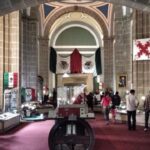
Nearest at 0.02 kms.
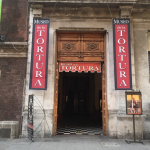
Nearest at 0.03 kms.
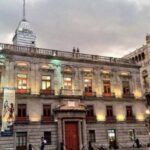
Nearest at 0.05 kms.

A museum dedicated to instruments of Torture and Human Subjugation.
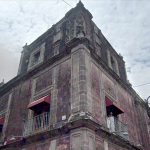
A glimpse into the earliest colonial history of Mexico City...
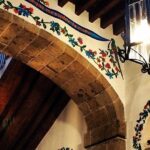
Easily one of Mexico City's most famous historical restaurants...

Home to two of Tolsá's mastpieces, it's only fitting the plaza should bear his name.

An exceptional gallery just outside the National Museum of Art...